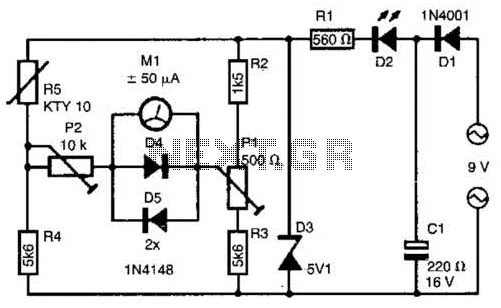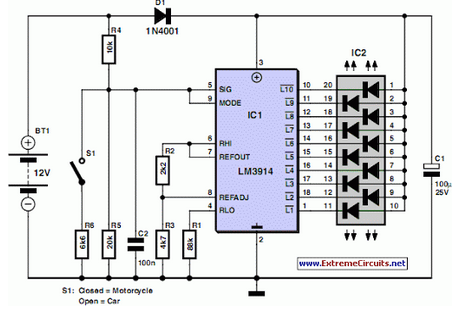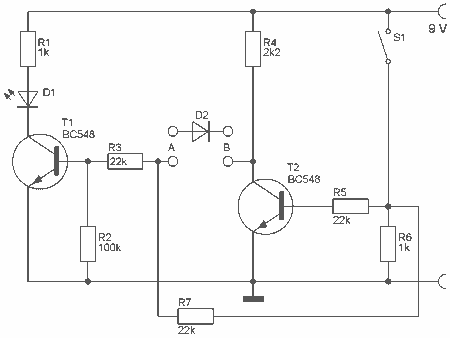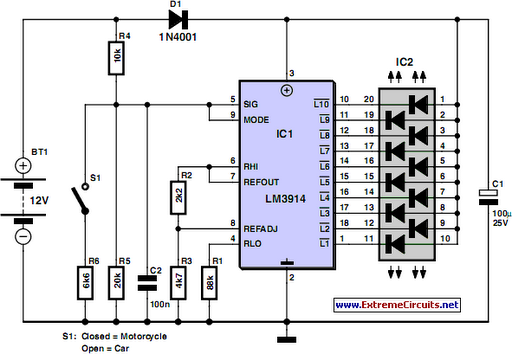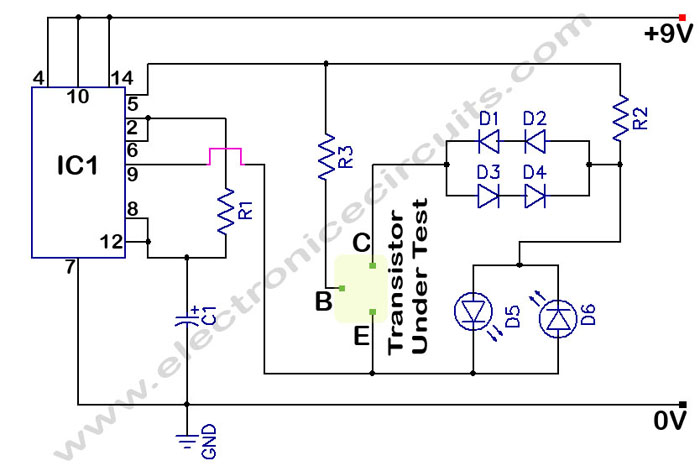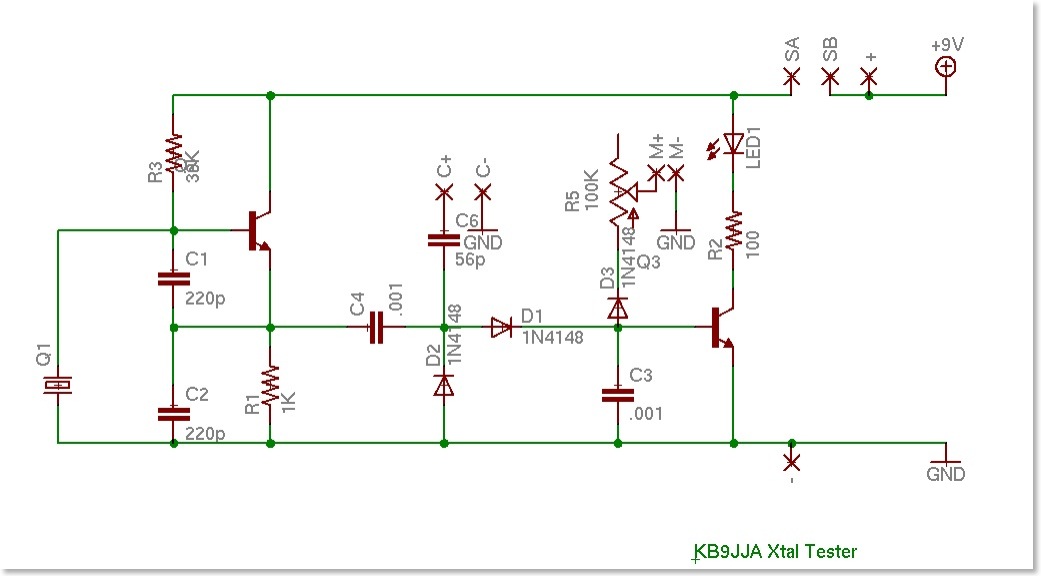
Tube tester
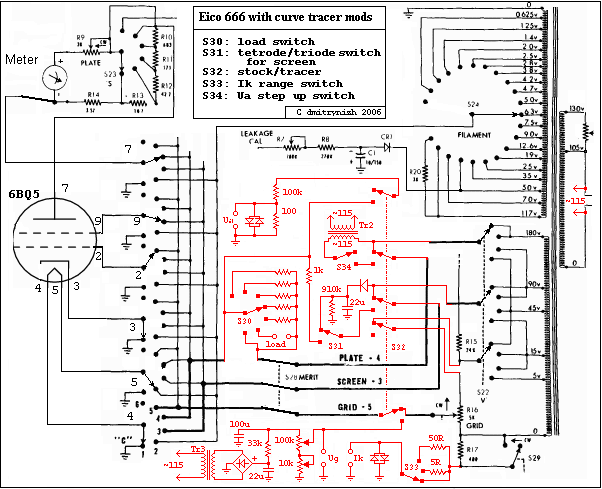
The Eico 666 is a capable tube tester whose functionality can be expanded with a modest investment of time to understand its schematic, operational regimes, and methods for adding new functionalities. This tester is known for supplying sufficient voltages and currents for most tubes and is capable of performing emission/conductance tests as well as leakage tests. The manual elaborates on the various operational procedures. Dynamic conductance is regarded as the "merit" test, for which a simplified schematic is provided. The origin of the voltages Fi1-Fi3 is not entirely clear, but it is understood that "Fi" refers to AC voltage. The relationship between grid voltage and plate voltage is ambiguous; however, it is noteworthy that the tester measures tube parameters in the AC domain, directly sourced from the wall transformer. The grid receives a positive (in-phase) AC signal. It is feasible to reverse the polarity to test tubes like the 6BQ5 with a negative (out-of-phase) grid AC. This concept raises interest in implementing a DC mode for the Eico 666 without making radical changes to its schematic, as well as optimizing its AC functionalities. The idea of a fixed voltage (often referred to as "DC voltage," though this term can be misleading) allows for the plate current to react to variations in grid voltage, with the slope of this change being termed transconductance. While it may seem that such behavior cannot be observed in an AC-plate AC-grid configuration, considering an AC-plate with a fixed-grid arrangement presents interesting possibilities. The plate voltage oscillates through negative, unusable ranges when the tube is inactive, and then through usable positive ranges, varying from zero to 1.414 volts of VAC. If the corresponding current swing were plotted, a plate line would emerge. Modifications to the Eico 666 allow for the measurement of plate voltage (Up), cathode current (Ik), and the supply of external grid voltage (Ug). These modifications are indicated with red ink in the schematic. An XY scope can be connected to the Up and Ik taps to visualize the plate line. Additional modifications permit the introduction of external AC voltage sources and load resistors, with the Up and Ik taps combined into a single stereo jack (J1), which can be a mini phone jack. The grid jack is a stereo 1/4" with normally-closed contacts, ensuring a shorting connection when not in use. Similarly, the screen B+ jack (J3) and plate B+ jack (J4) are 1/4" jacks with shorting bypasses. It is advisable to select high-quality 1/4" jacks, as many modern options may be unreliable. Various plugs for jacks J1, J2, J3, and J4 are designed for enhanced functionality. Notably, the plugs for J4 and J3 include options for additional AC voltage swing via an extra transformer, extra AC voltage with a load resistor, and configurations for voltage, load, and half-wave rectification, protecting the tube from unwanted negative semi-waves. Jacks 2, 3, and 4 can connect to a box housing an additional AC voltage source, implemented as a variac with a step-up transformer (50-100W), a regulated floating voltage supply for negative or positive bias, and a small digital voltmeter for convenience. Jack J1 can interface directly with a computer via a cable with protective diodes. The described modifications enable numerous new operational regimes for the Eico 666, with sockets added for monitoring tube plate voltage and cathode current, as well as providing external grid voltage.
The Eico 666 tube tester is designed to be versatile, allowing users to explore various testing regimes that enhance its utility. The modifications outlined enable users to tap into the AC and DC characteristics of tubes, facilitating a deeper understanding of tube performance. The integration of jacks and plugs for external connections not only expands the tester's capabilities but also allows for customization based on specific testing needs. The use of high-quality components, such as reliable jacks and transformers, is essential to maintain the integrity of the testing process. The ability to visualize the plate line via an XY scope enhances the analytical capabilities of the tester, providing valuable insights into tube behavior under different conditions. Overall, the Eico 666, with its modifications, represents a robust tool for both amateur and professional tube enthusiasts, offering a platform for experimentation and learning in the field of electronics.Is a capable tube tester, yet its use scenarios can be multiplied with only modest efforts invested in understanding its schematic, regimes, and ways to add new regimes. Eico 666 is capable tester, known to be able to supply voltages and currents adequate for most tubes.
It performs emission/conducance tests as well as leakage tests. The short summary, see [1] says: The manual [2] explains the regimes and elaborates on various procedures. Dynamic conductance is the "merit" test for which the simplified schemaic shown on the left is supplied.
It is not clear how the volatges Fi1-Fi3 form, although it is apparent, after careful reading, that "Fi" stands for AC volatge. Is grid voltage in-phase with the plate voltage Not clear, yet the fact that tester seem to measure tube parameters in AC domain, where the AC is taken directly from wall transformer, is interesting enough.
Note that the grid indeed receives positive (in-sync) AC signal. It would be pretty trivial to flip the polarity and let it test tubes such as 6bq5 with negative (out-of-phase) grid AC. This thought triggered my interest; I became curiuus about how to a DC mode to my eico666 without changing its schemaic too radically, and how to better utilize its AC regimes.
The former seems obvious and hence desirable, the latter appeared odd but led to very interesting possibilities. When triode plate sees a fixed voltage (aka "DC voltage", term which is standard but a misnomer by itself) its plate current can respond to changes in grid voltage and the slope of the change is called transconductance.
You may think that nothing like that can be seen in AC-plate AC-grid regime; but what about AC-plate, fixed-grid regime Plate voltage swings across negative, unusable range, when the tube is closed, then across useable, positive range - through each value from zero to 1. 414 volts of VAC. If we could plot corresponding current swing we would see. a plate line! Shown on the right are the mods to EICO666 permitting to obtain Up, Ik and supply external Ug. The new wires are in read ink. These are the only changes required. A scope in XY can be connected to the Up, Ik taps and the plate line will be displayed on the screen.
Shown on the right are further mods to Eico-666 permitting us to obtain Up, Ik and supply external Ug, as well as supply additional insertions into plate B+ and screen B+. The Up and Ik taps are combined into single stereo jack, J1. This jack can be 1/8" in size (mini phone jack), as used on PC audiocards. The grid jack is stereo 1/4", with two normally-closed contacts on each channel, connected together. This way, when nothing is inserted, the jack represents a shorting connector. In a similar way, screen B+ jack J3 and plate B+ jack J4 are stereo 1/4" jacks with shorting bypass. Note: it is better to locate NOS 1/4" jacks with reliable contacts, as many modern 1/4" audio jacks are of poor quality.
Shown on the right are plugs to go into jacks J1, J2, J3, J4. Of particular interest are the plugs for J4 and J3. Shown are 3 variants - the first one providing additional AC voltage swing by means of an extra transformer; the second one providing extra AC voltage and a load resistor, the third one providing voltage, load and half-wave rectification, sparing the tube from unwanted negative semi-waves. Jacks 2, 3, 4 can be connected to a box hosting an extra AC voltage source implemented as a variac with a step-up transformer of medium power (50-100W), a regulated, stabilized, floating voltage supply that can serve as negative or positive bias and a small 3-digit digital voltmetter mounted inside for convenience.
Jack j1 can go directly into computer via a cable with protective diodes inserted. Described above are the mods permitting many new regimes for Eico-666. Two sockets were added to monitor tube plate voltage and cathode current, a socket was added to provide external grid voltage, 2 socket 🔗 External reference
The Eico 666 tube tester is designed to be versatile, allowing users to explore various testing regimes that enhance its utility. The modifications outlined enable users to tap into the AC and DC characteristics of tubes, facilitating a deeper understanding of tube performance. The integration of jacks and plugs for external connections not only expands the tester's capabilities but also allows for customization based on specific testing needs. The use of high-quality components, such as reliable jacks and transformers, is essential to maintain the integrity of the testing process. The ability to visualize the plate line via an XY scope enhances the analytical capabilities of the tester, providing valuable insights into tube behavior under different conditions. Overall, the Eico 666, with its modifications, represents a robust tool for both amateur and professional tube enthusiasts, offering a platform for experimentation and learning in the field of electronics.Is a capable tube tester, yet its use scenarios can be multiplied with only modest efforts invested in understanding its schematic, regimes, and ways to add new regimes. Eico 666 is capable tester, known to be able to supply voltages and currents adequate for most tubes.
It performs emission/conducance tests as well as leakage tests. The short summary, see [1] says: The manual [2] explains the regimes and elaborates on various procedures. Dynamic conductance is the "merit" test for which the simplified schemaic shown on the left is supplied.
It is not clear how the volatges Fi1-Fi3 form, although it is apparent, after careful reading, that "Fi" stands for AC volatge. Is grid voltage in-phase with the plate voltage Not clear, yet the fact that tester seem to measure tube parameters in AC domain, where the AC is taken directly from wall transformer, is interesting enough.
Note that the grid indeed receives positive (in-sync) AC signal. It would be pretty trivial to flip the polarity and let it test tubes such as 6bq5 with negative (out-of-phase) grid AC. This thought triggered my interest; I became curiuus about how to a DC mode to my eico666 without changing its schemaic too radically, and how to better utilize its AC regimes.
The former seems obvious and hence desirable, the latter appeared odd but led to very interesting possibilities. When triode plate sees a fixed voltage (aka "DC voltage", term which is standard but a misnomer by itself) its plate current can respond to changes in grid voltage and the slope of the change is called transconductance.
You may think that nothing like that can be seen in AC-plate AC-grid regime; but what about AC-plate, fixed-grid regime Plate voltage swings across negative, unusable range, when the tube is closed, then across useable, positive range - through each value from zero to 1. 414 volts of VAC. If we could plot corresponding current swing we would see. a plate line! Shown on the right are the mods to EICO666 permitting to obtain Up, Ik and supply external Ug. The new wires are in read ink. These are the only changes required. A scope in XY can be connected to the Up, Ik taps and the plate line will be displayed on the screen.
Shown on the right are further mods to Eico-666 permitting us to obtain Up, Ik and supply external Ug, as well as supply additional insertions into plate B+ and screen B+. The Up and Ik taps are combined into single stereo jack, J1. This jack can be 1/8" in size (mini phone jack), as used on PC audiocards. The grid jack is stereo 1/4", with two normally-closed contacts on each channel, connected together. This way, when nothing is inserted, the jack represents a shorting connector. In a similar way, screen B+ jack J3 and plate B+ jack J4 are stereo 1/4" jacks with shorting bypass. Note: it is better to locate NOS 1/4" jacks with reliable contacts, as many modern 1/4" audio jacks are of poor quality.
Shown on the right are plugs to go into jacks J1, J2, J3, J4. Of particular interest are the plugs for J4 and J3. Shown are 3 variants - the first one providing additional AC voltage swing by means of an extra transformer; the second one providing extra AC voltage and a load resistor, the third one providing voltage, load and half-wave rectification, sparing the tube from unwanted negative semi-waves. Jacks 2, 3, 4 can be connected to a box hosting an extra AC voltage source implemented as a variac with a step-up transformer of medium power (50-100W), a regulated, stabilized, floating voltage supply that can serve as negative or positive bias and a small 3-digit digital voltmetter mounted inside for convenience.
Jack j1 can go directly into computer via a cable with protective diodes inserted. Described above are the mods permitting many new regimes for Eico-666. Two sockets were added to monitor tube plate voltage and cathode current, a socket was added to provide external grid voltage, 2 socket 🔗 External reference
